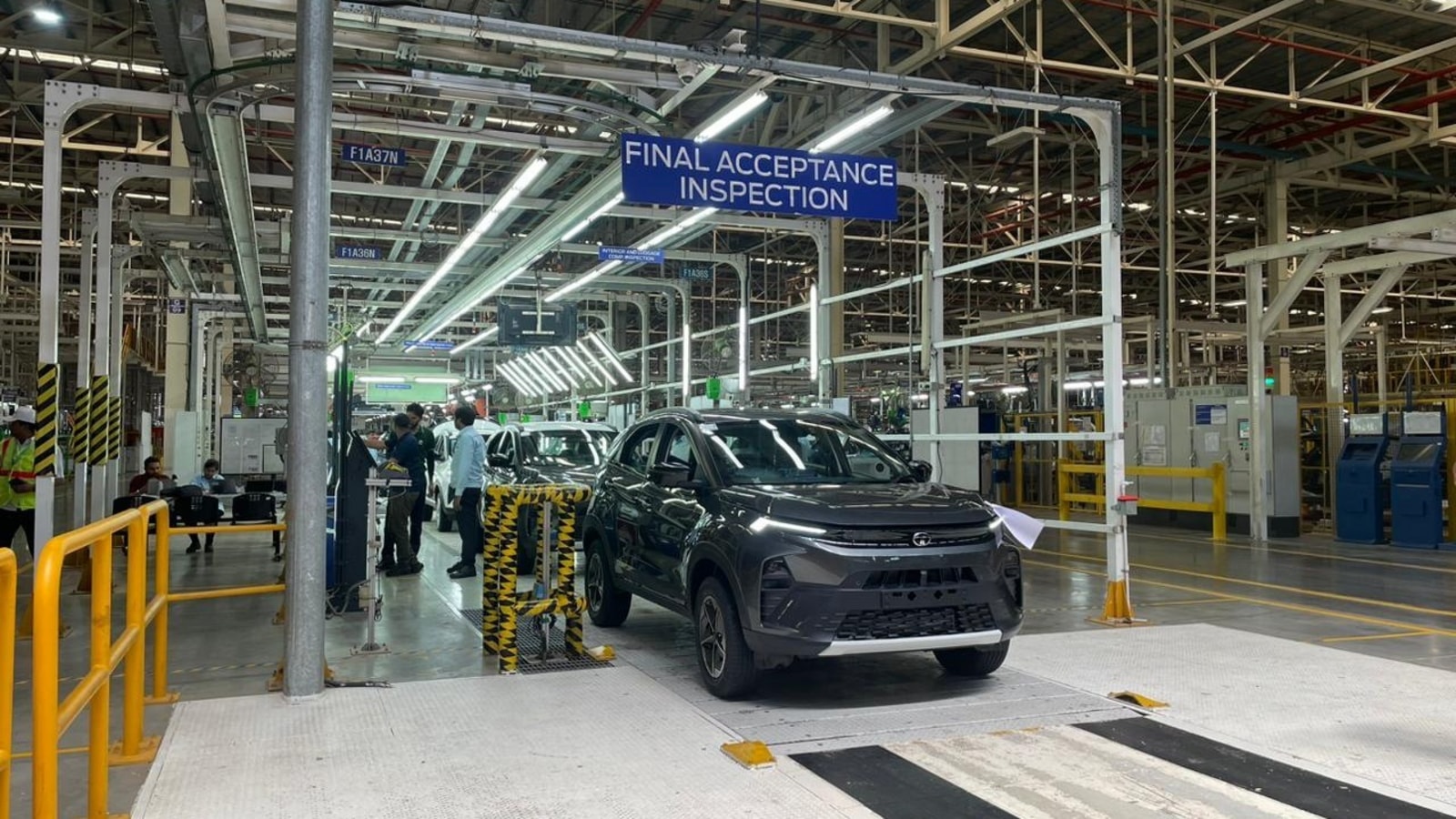Man and machine combine at Tata Motors plant in Sanand, its second here and one that was formerly owned by Ford. With the automotive world undergoing
…
Ford’s exit from India was a heartbreak for many Indians, especially for Ford’s employees, particularly the plant workers. In September 2021, Ford announced plans to shutter its Sanand vehicle assembly plant by the fourth quarter of the year, leaving many workers unemployed. Simultaneously, Tata Motors was making significant strides in the Indian market with its “New Forever” brand strategy and the new electrification strategy, prominently featuring the Nexon.
Tata Motors aimed to expand its manufacturing capacity to meet its ambitious targets, leading to the strategic acquisition of Ford’s Sanand plant in Gujarat. This move created a win-win situation for both parties. With the acquisition, Tata Motors is poised to establish a new base for its electric vehicles (EVs) in India.
Tata, holding a dominant position in the Indian electric car market, is determined to maintain its lead over competitors. While Ford’s exit caused a stir in the Indian automotive industry and left many Sanand facility workers unemployed, Tata Motors seized the opportunity to enhance its production capabilities.
The Indian car major took over the plant from the Americans after Ford announced its India exit. Spread over at least 460 acres with work on expansion also underway, Tata began production at this facility – its second in Sanand – in January of this year.
Also Read : Nexon is the first vehicle to roll out from former Ford plant
But from the very beginning, Tata Motors emphasised that electric vehicles would be the driving force at the former Ford facility. Tata claims it managed to retool the plant to meet its requirements in a record-breaking one year. This achievement was credited to the ‘One Tata’ approach.
What is the ‘One Tata’ approach?
Jaideep Desai, plant head-Sanand plant, Tata Motors explained during HT Auto’s recent visit here that the company received consultancy services from TCS, high-end modern robotics from Tata Technologies and EV manufacturing expertise from Jaguar Land Rover. Additionally, other Tata Motors plants made efforts to help activate the Sanand plant ‘in record time.’
Human power behind a herculean effort
While the machinery and algorithms were being processed, Tata Motors committed to retaining 100 per cent of the workforce from Ford for the Sanand plant. This posed a challenge for the Indian carmaker as these workers were accustomed to models like the Ford Figo, which had far fewer electronic components than the Tata Nexon and Nexon EV.

Tata Passenger Electric Mobility Limited (TPEM) took charge of skilling and reskilling these workers. For this, the company partnered with Ganpat University in Gujarat, calling it ‘a first for cultural assimilation and future readiness.’ Although not compulsory, 100 per cent of the shop floor employees are participating in higher education through an internal university, Nalanda.
At Nalanda, shop floor employees with ITI degrees undergo diploma courses, diploma holders pursue B.Tech degrees, and B.Tech degree holders advance to M.Tech programs. Notably, all these courses specialise in electric vehicles. Tata Motors reports that anywhere between 600 and 700 students are currently enrolled in these courses, with 150 of them in B.Tech or M.Tech programs.
Another significant development is the inclusion of women employees. While Ford had no women shop floor employees, TPEM has taken on board 100 women students in the last 10 months who will later join the shop floor. Additionally, over 51 technicians have been promoted to staff roles and 84 have moved to team leader positions after undergoing these courses.
Moving with the times
While human resources were crucial for Tata’s future readiness, upgrading hardware and software competencies was equally important. The company updated all existing machinery from the Ford era to comply with Tata standards and added new machines and technologies like artificial intelligence (AI) and machine learning (ML).
Also Read : Tata Motors’ safety drive: A closer look at company’s Integrated Safety Centre
Tata Motors says it installed 185 new machines across the press shop, welding shop and paint shop. Additionally, all machines were equipped with AI and ML capabilities to align with the digitalization era. TPEM claims that these upgrades have enabled 100 per cent error-proofing, significantly reducing defect rates in the final output.

Sanand’s role in the overall picture
Vivek Srivatsa, Head of Marketing, Sales and Service Strategy, Tata Passenger Electric Mobility, explained HT Autothat while the Sanand plant will help in expanding the overall production capacity for Tata Motors, one key advantage of the plant is that it manufactures both internal combustion engines products and EVs. “This gives us a lot of flexibility in terms of catering to the market demand,” he added.
The Sanand plant currently manufactures the Nexon and Nexon EV, with an annual capacity of 300,000 units, expandable to 420,000 units. Moving forward, Tata aims to produce new and upcoming vehicles at the Sanand plant, focusing primarily on electric vehicles, especially those based on the activ.ev platform.
First Published Date: 23 May 2024, 14:00 PM IST

